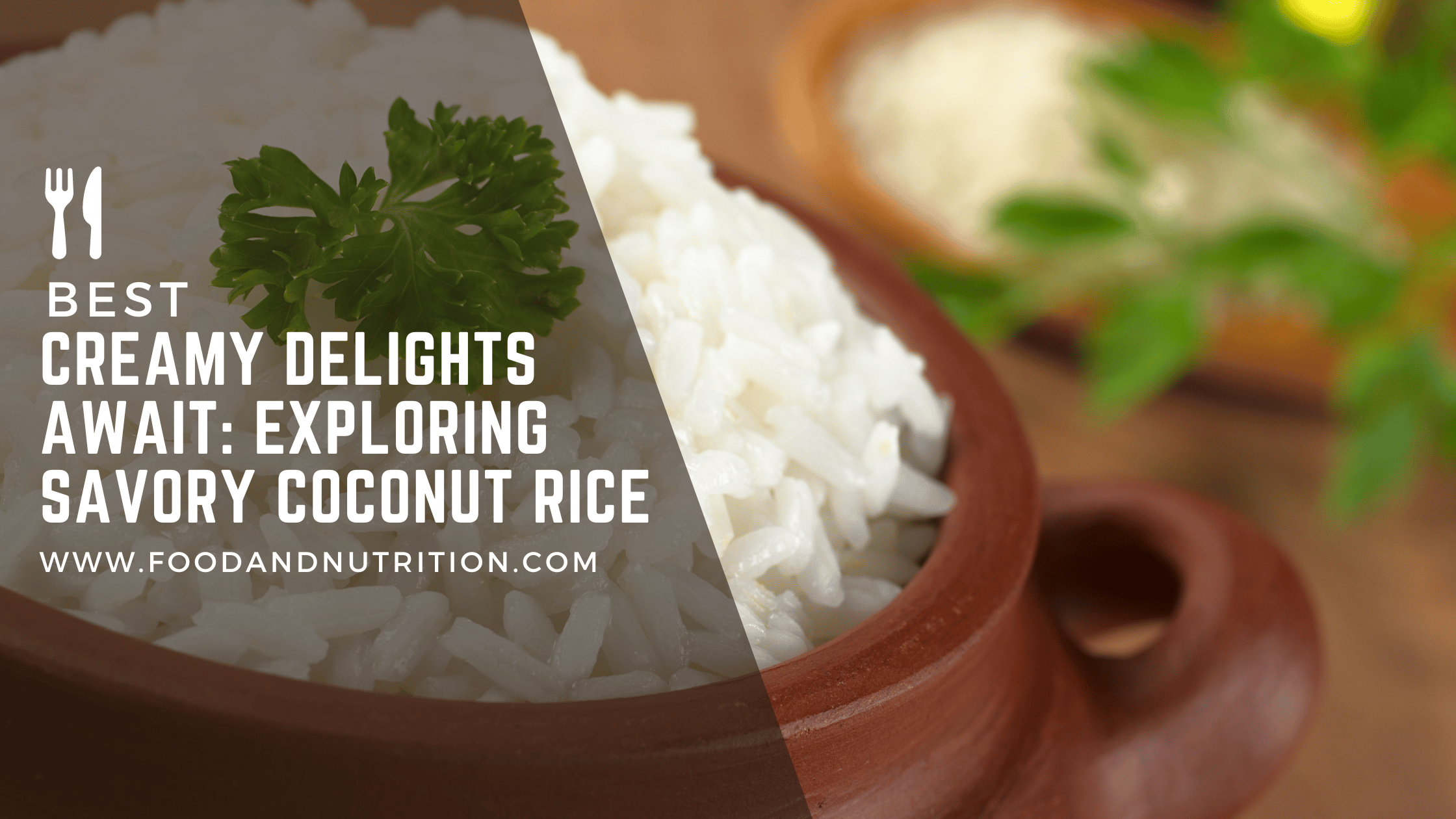Discover Creamy Delights: Savory Coconut Rice Recipe

History and Popularity
From the verdant landscapes of Southeast Asia to the vibrant streets of the Caribbean, coconut rice has graced tables across the globe for centuries. This delightful dish, known for its luxurious creaminess and captivating aroma, has evolved through generations, each culture adding its own unique touch. In countries where coconuts are abundant, such as Thailand and Indonesia, coconut rice has long been a cherished staple. Its popularity transcends cultural boundaries, appealing to those who crave both comfort and adventure on their plate.
Common Ingredients
The beauty of Savory Coconut Rice lies in its simplicity. The core ingredients include fragrant jasmine or basmati rice, coconut milk, and a handful of aromatic seasonings. A touch of coconut oil enriches the dish further, enhancing the coconut’s natural sweetness. Fresh ginger and minced garlic infuse a layer of warmth and depth, elevating the flavor profile to new heights.
Creamy and Flavorful Savory Coconut Rice Recipe
Ingredients
- 2 cups jasmine or basmati rice
- 1 can coconut milk 13.5 oz
- 1 3/4 cups water
- 1 teaspoon salt
- 1 tablespoon coconut oil or preferred cooking oil
- 2-3 slices fresh ginger
- 2-3 cloves garlic minced
- 1/4 Cup Optional: cilantro for garnish finely chopped
Instructions
- Rinse the Rice: Rinse the rice under cold water until the water runs clear. Drain well.
- Sauté Aromatics: In a medium-sized pot, heat the coconut oil over medium heat. Add the minced garlic and ginger slices. Sauté for about 1-2 minutes until fragrant.
- Add Rice and Coconut Milk: Add the rinsed rice to the pot and stir to coat the grains with the aromatic oil. Pour in the coconut milk and water, then add the salt. Stir well.
- Bring to a Boil: Bring the mixture to a boil over high heat. Once boiling, reduce the heat to low and cover the pot with a tight-fitting lid.
- Simmer and Cook: Let the rice simmer for about 15-18 minutes, or until the liquid is absorbed and the rice is tender. Avoid lifting the lid while cooking to ensure even cooking.
- Fluff and Serve: Once the rice is cooked, remove the pot from the heat. Let it sit, covered, for 5 minutes. Then, remove the lid, fluff the rice with a fork, and discard the ginger slices.
- Garnish and Enjoy: Transfer the Savory Coconut Rice to a serving dish. If desired, sprinkle finely chopped cilantro over the rice for a burst of freshness and color. Serve warm as a delightful side dish to complement your favorite main courses.
Notes
Nutrition and Health Benefits
While coconut rice boasts a sumptuous taste, it also offers a range of nutritional benefits. Coconut milk, a staple in this recipe, provides a source of healthy fats known for their medium-chain triglycerides (MCTs), which may support brain health and energy levels. The dish also supplies carbohydrates from the rice, serving as a satisfying accompaniment to protein-rich main courses. Balancing portion sizes and complementing it with lean proteins and vibrant vegetables can create a well-rounded, nutritious meal.
Serving Ideas
Savory Coconut Rice is a versatile canvas upon which to create culinary masterpieces. Pair it with succulent grilled shrimp for a tropical seafood feast. Balance its creaminess with the crunch of stir-fried vegetables, or serve it alongside your favorite curry for a harmonious symphony of flavors. For an extra touch of elegance, mold the rice into small cakes before pan-frying, creating a delightful appetizer or side dish that’s sure to impress.
Chef Tips
- Rinse for Fluffiness: Rinse the rice thoroughly to remove excess starch, ensuring fluffier grains once cooked.
- Aromatic Infusion: Allow the ginger and garlic to sauté gently in coconut oil to release their essential oils and amplify their flavors.
- Coconut Milk Consistency: Shake the can of coconut milk before opening to ensure even distribution of the creamy coconut fat.
- Lid Linger: Once the rice is cooked, let it rest with the lid on for a few minutes to allow the flavors to meld and the texture to perfect.
- Garnish Grace: Elevate your presentation by garnishing with finely chopped cilantro or toasted coconut flakes.
In Conclusion
Savory Coconut Rice isn’t just a dish; it’s an invitation to embark on a culinary journey that tantalizes the senses and nourishes the body. As you savor the creamy textures and exotic aromas, you’re experiencing the legacy of cultures that have embraced the beauty of coconuts for generations. Whether you’re seeking comfort, indulgence, or a touch of the exotic, this dish is a testament to the harmonious marriage of tradition and taste. So, gather your ingredients, ignite your senses, and relish the creamy delights of Savory Coconut Rice – an experience that promises to be both unforgettable and utterly satisfying.
- Discover the Nordic Diet: A Path to Health and Sustainability
- Ultimate Guide to Nutrition & Wellness Tips for Healthy Travel Adventures
- Personalized Menu Planning: Tailoring Nutrition to Individual Needs
- Discover the Best Healthy Cooking Oils: Benefits, Uses, and Expert Tips
- Savor the Sunshine Flavors: Lemon Chicken Skewers for Grilling Bliss
- Ultimate Guide to Adaptogens: Benefits, Uses, and How to Incorporate Them
